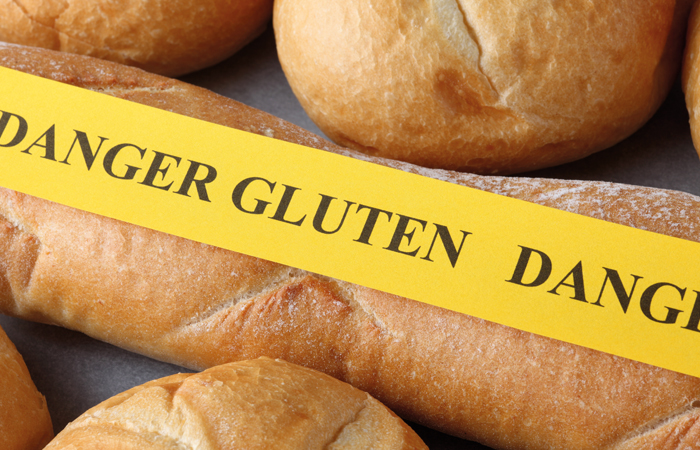Confronting coeliac disease
In In-depth
Follow this topic
Bookmark
Record learning outcomes
Coeliac disease in children is common, yet most children have not been diagnosed. What can community pharmacy do to help?
Coeliac disease is the most common food-related chronic disease among children in Europe, affecting one in 100 across the continent, and as many as three in 100 in some countries – according to charity Coeliac UK.

Despite its frequency, experts claim that up to 80 per cent of cases remain undiagnosed, which can have serious health consequences.
Sarah Sleet, chair of the Association of European Coeliac Societies (AOECS) and Coeliac UK’s chief executive, says: “In children, diagnosing coeliac disease as early as possible is essential for ensuring optimal growth, development and symptom management. There are many serious health complications if coeliac disease is left undiagnosed, including impaired weight gain, growth problems, delayed puberty, chronic fatigue and osteoporosis.”
To address this crisis, experts and patient organisations across Europe are calling upon healthcare providers and policymakers to facilitate the establishment of national detection programmes for earlier and more frequent identification of coeliac disease in children.
This also gives pharmacy teams an opportunity to help parents and carers spot signs and symptoms in their children, as early diagnosis is crucial for quality of life and health.
What is coeliac disease?
Coeliac disease is a life-long autoimmune disease caused by a reaction to gluten – a protein found in the grains wheat, barley and rye. Some people with coeliac disease are also sensitive to a similar protein (avenin) in oats.
When someone with coeliac disease eats gluten their body’s immune system attacks its own tissues, which causes damage to the lining of the gut and means that the body can’t absorb nutrients from food properly.
The only treatment currently available is strict, life-long adherence to a gluten-free diet.
Genetic link
Coeliac disease affects people from all ethnic groups but, according to Ruth Passmore, Coeliac UK’s health policy officer: “Like many autoimmune diseases, it is more common in women. To develop coeliac disease you need to have the genes associated with the condition. These genes are very common and are carried by up to 40 per cent of the general population, but only a small number will go on to develop coeliac disease.”
While it can be diagnosed at any age via a simple blood test to check for antibodies once gluten has been introduced into the diet, Ruth says “only 24 per cent who have the condition have been diagnosed, so there are nearly half a million people who have coeliac disease but don’t yet know”.
Health complications
If coeliac disease isn’t diagnosed and treated appropriately, there is an increased risk of complications including osteoporosis, ulcerative jejunitis, intestinal malignancy, functional hyposplenism (impairment of spleen function), vitamin D deficiency and iron deficiency. For children, a delayed diagnosis or non-adherence to a gluten-free diet can also result in faltering growth and delayed puberty.
Coeliac disease is an autoimmune disease and if you have one autoimmune condition, there is an increased risk of having another. Dr Peter Gillett, consultant paediatric gastroenterologist at the Royal Hospital for Sick Children, Edinburgh says: “It is worth remembering there are certain groups that are at risk. Coeliac disease is more commonly seen in people with type 1 diabetes and thyroid issues, so be aware of this when dealing with patients on other treatments.”
There is also growing evidence that connects coeliac disease with neurological conditions. “The most common neurological symptoms in people with coeliac disease or gluten sensitivity are ataxia and neuropathy,” explains Ruth. “Ataxia includes clumsiness, loss of balance and uncoordinated movements leading to a tendency to fall and slurred speech. Neuropathy causes numbness and tingling usually affecting feet and hands but it can affect other parts of the body. Other neurological symptoms can include headaches, sometimes associated with foggy brain, slow thinking and cognitive difficulties.”
Indeed, the latest NICE guidelines for coeliac disease recommend that testing for coeliac disease should be considered in people with unexplained neurological symptoms.
Signs and symptoms
Pharmacy staff can play a key role in recognising coeliac disease and referring people to a GP for the initial blood test. However, because coeliac disease can present in different ways, it pays to improve familiarisation of the range of symptoms.
“Children may present a very, very disparate set of symptoms,” says Peter. “For example, there may be chronic diarrhoea after weaning, but this usually won’t show itself until at least 10 months of age, and of course many children this age will have loose stools and may have other issues like cow’s milk protein allergy, et cetera. Key things to look out for are poor weight gain, or increased appetite but poor weight gain. Some become a bit disinterested in food, display irritability, have chronic loose stools or constipation, lethargy or fatigue, and mouth ulcers. Anaemia and tiredness might also be issues you get asked about.”
Other symptoms can include:
- A bloated tummy
- Unexpected weight loss
- Faltering growth or a change in growth pattern
- Nutritional deficiencies such as iron, vitamin B12 and folate deficiency
- Unexplained neurological symptoms
- Dental enamel defects.
A skin rash called dermatitis herpetiformis (DH) can also be a symptom and is the skin manifestation of coeliac disease. It commonly occurs on the elbows, knees, shoulders, buttocks and face with red, raised patches, often with blisters.
Ruth suggests screening for coeliac disease is recommended for some children, even if they don’t have any symptoms: “Children should be tested if they have a first degree relative (parent or sibling) with coeliac disease and if they have type 1 diabetes and autoimmune thyroid disease”. Peter adds that “testing should also be considered in children with Down’s syndrome and Turner syndrome”.
Pharmacy support
After diagnosis, the British Society of Paediatric Gastroenterology, Hepatology and Nutrition (BSPGHAN) recommends ongoing monitoring by an experienced paediatric dietitian and paediatric gastroenterologist. Children should be followed up six to 12 months after diagnosis, with an annual check up after this. And of course, if a child’s symptoms have not improved or are getting worse after diagnosis then, as ever, they should be referred back to a GP.
Pharmacy teams can further support patients by providing information on a gluten-free diet, including information on gluten-free foods available on prescription (to find the policy in specific areas, go to: coeliac.org.uk/prescribingmap).
As someone with coeliac disease herself, pharmacist Rachael Patel from Sabel Pharmacy in Chiswick has plenty of advice from both sides of the table. She says: “It’s definitely hard for children living with coeliac disease, but parents need support as well as it affects the whole family. Mealtimes are a classic example – if you’re cooking pasta for dinner you’ve either got make it all gluten free, or do two different versions.”
With the number of gluten-free foods available on prescription due to be reduced, Rachael is concerned that this is going to make it harder for families to cope. “I think more basics like pasta and cereals should remain on prescription, particularly for children”, she says, “because these items can be expensive and hard to access for lots of people.”
And on the subject of food, Rachael warns that many people are not aware that a lot of gluten-free food has a high fat content: “For example, normal bread is usually one to two per cent fat,” she says, “but because removing gluten removes moisture, manufacturers tend to add fat to make up for that, which means some gluten-free breads can have 12 per cent fat content.”
It is also important to remind people with coeliac disease that there are some vaccinations they are entitled to and may need to have, including pneumococcal, flu and meningococcal A,C,W,Y vaccinations.
Gluten-free products on prescription

In March 2017 the Department of Health and Social Care (DHSC) launched a consultation on whether to make changes to the availability of gluten-free foods on prescription.
Following a public consultation that received almost 8,000 responses – including 1,150 from healthcare professionals – DHSC announced that the minister’s preferred option is that “bread and food mixes only” should remain available across England, with 70 per cent of all respondents opting for gluten-free prescribing to be restricted.
The DHSC has said that they will commence work on amending the National Health Service (General Medical Services Contracts) (Prescription of Drugs etc.) Regulations 2004, Schedule 1, after which gluten-free foods from the following categories will no longer be available for prescribing: biscuits, cereals, cooking aids, grains/flours and pasta.
Further signposting
Rachael says her first port of call for signposting is always Coeliac UK, which has plenty of information and services to help families to shop, cook, eat out and travel with confidence on a gluten-free diet.
The charity also offers an online learning programme specifically designed for pharmacy staff. Healthcare professionals can join Coeliac UK’s free Healthcare Professional membership, which provides access to – amongst other things – the latest research into coeliac disease and the gluten-free diet, as well as an online forum for sharing best practice and information with other HCP Network Members.
According to Ruth, the average time to diagnosis of coeliac disease is 13 years, so community pharmacy has a huge part to play in helping speed that up by raising awareness of the symptoms of coeliac disease and providing families with support and advice that can be truly life-changing.
Further information
- Coeliac UK: Helpline (0333 332 2033) 9am – 5pm Monday to Friday
- Coeliac UK – recommended vaccinations
- NHS Education for Scotland’s Gluten-Free Service support pack.
In children, diagnosing coeliac disease as early as possible is essential for ensuring optimal growth
